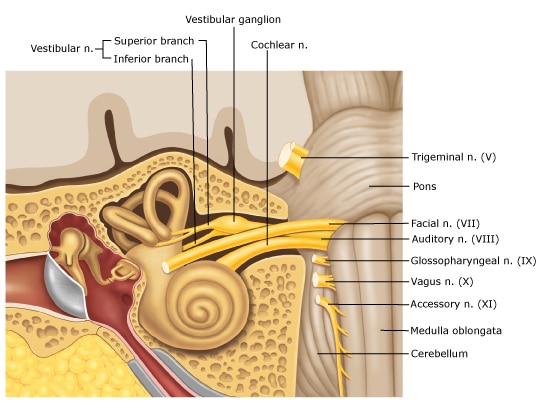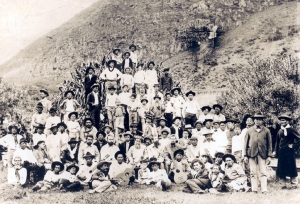HHTM Staff: Hansen’s Disease (Leprosy) history, prevalence, clinical manifestations, mechanism of destruction, and means of diagnosis have been described so far in this series. Today’s post touches on differential diagnosis and early, barbaric, ineffective treatment methods that left those suspected of harboring the disease with ruined lives.
Delayed Differential Diagnosis
The World Health Organization writes that “clinical signs and symptoms… are easy to observe and elicit by any health worker after a short period of training.” Unfortunately, signs, symptoms, and tissue smears only divine the disease once it comes out of hiding and manifests in one form or another. This is long into the infection, meaning that by definition, the diagnosis is invariably delayed. The delay is even more pronounced in developed countries where the disease is seen less often and medical workers are not versed in its identification.
Added to this, differential diagnosis in the early stage of the disease is exceedingly difficult because the clinical manifestations are common to a number of skin and neurological diseases (Bolognia et al, 2012). Finally, persistent disease stigma is an obstacle to diagnosis, since victims from ancient times forward have hidden the condition as long as possible if leprosy is suspected (Harrison, 1986).
It is easy to imagine that false positive identifications abound in areas where the disease is endemic and false negatives are likely in areas where the disease is virtually unknown.
History of “Treatment”
Isolation and Banishment from Tribal Communities
Leprosy was considered contagious in most societies and “treatment” seems to have consisted of isolation and quarantine, with those suspected of having the disease sent out from populated areas to live alone or with others labeled with the disease.
Leprosy was claimed to originate along the Nile in ancient Egypt (Lucretius) but few if any mummified remains show evidence of leprosy in that region. This is negative evidence thought to suggest that Egyptian lepers were banished from populated areas, left to their own devices, and died without mummification.
Hebrews were thought to have carried leprosy with them when they escaped from Egypt. Biblical writing (Leviticus, 13:45f) describes banishment from the community for those with persistent skin disorders. Within the community, precautionary hygienic protocols were part of daily life, designed to protect the community from leprosy and other diseases. Otherwise, the only treatment was heavenly and those who experienced “divine healing” had to go through an “elaborate cleansing ritual” conducted by priests before they were allowed back into the community (Harrison, 1986).
Cleansing and Punishment
Things got worse in the middle ages, when leprosy continued to be viewed as a contagious scourge brought on as divine punishment by God. Lepers were viewed as sinners who brought the disease on themselves and apparently acted under God’s orders as they spread it to other sinners.
Other than divine intervention, about the only humane treatment seems to have been baths, which were a popular treatment in some Christian areas to cleanse lepers of their sins. “Treatment” expanded to include ritualistic isolation and punishment on earth. In the 13th century, the Church’s Mass of Separation ritual was performed on lepers, sometimes while they stood in open graves to simulate death. Even that was preferable to civil actions in which the victim’s worldly goods were appropriated after the leper was declared legally dead. (Edwards et al., undated).
Containment of a Disease on the Move
Just as the Hebrews brought leprosy out of Egypt, leprosy spread with immigration to western Europe that accompanied the decline of the Roman Empire and the Crusades. The spread and increase in prevalence prompted creation of many leprosariums to isolate, if not treat, lepers in Europe in the 12th-16th centuries. These were often under the auspice of monasteries.
Not much changed for centuries, even though science discovered bacteria and discarded Galen’s bodily humors theory. Treatment for leprosy continued to be isolation and banishment.
Government-run leprosariums in the 19th and early 20th centuries kept lepers away from society for their entire lives as they lived in contained communities on remote peninsulas (Hassel Island, St Thomas; Molokai, HI; Carville, LA). Carville was not even established until 1921 but it was formed with the goal of finding effective treatments, not simply to isolate. Although US “colonies” are now closed, a few leprosariums still exist in other parts of the world.
Alchemists at Work
Meanwhile, alchemists–the pharmacists of the Middle Ages– were working on cleansing cures to balance the four bodily humors. They had  lepers drink gold infused concoctions, undergo blood lettings, and bathe in “pure” blood (from virgins and infants) as efforts to eliminate phlegm and excessive black bile from the blood.
lepers drink gold infused concoctions, undergo blood lettings, and bathe in “pure” blood (from virgins and infants) as efforts to eliminate phlegm and excessive black bile from the blood.
By far the most famous, and infamous, alchemist was Paracelsus, a 16th century philosopher, alchemist, theorist, you name it. His given name was Theophrastus Bombastus von Hohenheim (1493-1541) from which we derive the adjective “bombastic.” Besides naming laudanum and using ether (sweet vitriol) centuries before medicine embraced them; he bombastically claimed discovery of a mysterious healing “red mercury,” claiming its miraculous healing powers in his Archidoxes of Magic:
By means thereof I have cured the leprosy, venereal disease, dropsy, the falling sickness, colic, scab, and similar afflictions; also lupus, cancer, noli-me-tangere, fistulas, and the whole race of internal diseases, more surely than one could believe.
Audiologists can breathe a sigh of relief that Paracelcus did not prevail in the treatment of leprosy, since the effect of mercury toxicity on the auditory nerve is well known.
References
Edwards J, et al. Lepers. Marginality and Community in Medieval Europe. Kenyon College (undated).
Han et al. “New Leprosy Bacterium: Scientists Use Genetic Fingerprint To Nail ‘Killing Organism'”. ScienceDaily. Nov 28 2008.
Harrison, RK. Background on leprosy in the Bible. International Standard Bible Encyclopedia. Grand Rapids: Eerdmans. 1986.
Feature Image courtesy of Marginality and Community in Midieval Europe,
Blog Images from Amazon and WikiMedia








